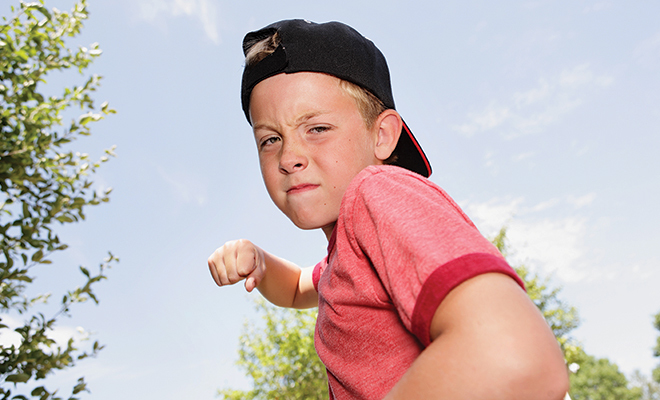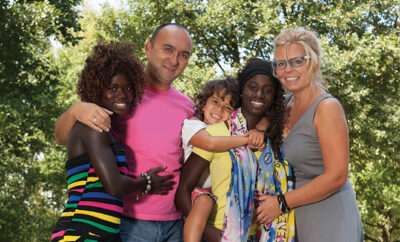
Is Your Child A Bully?
One of a parent’s most difficult days is when someone from your child’s school calls and says, “Please come in. We need to talk.” Those words strike fear into the heart of every parent. Defensive mechanisms go up and parents prepare for war. We all want to defend our child, but sometimes our child is wrong, and it’s up to each parent to figure out what went wrong and try to fix the problem. One of these cases is when the child is accused of bullying.
How can you tell if your child is a bully?
Sadly, bullying is a learned behavior. Too often children pick up this behavior from our behavior as parents. When we exclude people from our social circle, gossip about friends or acquaintances, or hurt other people, we are engaging in bullying behaviors that our children can copy.
According to Joel Haber, PhD, author of Bullyproof Your Child for Life, some signs to watch for are: refusing to play with certain children or being intolerant of children who are different (Does your child reject handicapped children or children of a different race or culture?); continuing negative behaviors after you have told her/him to stop (Does your child continue to push siblings and make them fall down? Are your children continually fighting over toys?); being excessively concerned with popularity (Does your son worry about being the best in sports? Is your daughter worried about the latest fashions, hairdos and getting her nails done just right? Are the kids constantly begging for the latest smart phone or mobile device?); frequently teasing or taunting other children or harming animals (Do your children mercilessly taunt each other about perceived flaws, school events or behaviors? Do the kids hurt the cat or dog and then deny it?); or constantly playing aggressive videogames.
What to do
As parents, it is our responsibility to nip bullying in the bud. When you see your child bullying another child, step in and stop the behavior. Talk to your child, pointing out the negative behaviors and offer other suggestions. If the antisocial behaviors don’t stop, professional counseling may be necessary. Whatever you do, don’t ignore bullying and hope it will go away by itself. It won’t. Childhood bullies turn into adult bullies. Bullying behaviors can become hazing in college, sexual harassment in the work place, and aggression in other areas of life. These are all faces of the same thing, according to Mike Donlin, a program consultant with the Seattle Public Schools.
While any one of these behaviors is a warning sign, by themselves they may simply be indicative of a passing phase and of little concern. Does the child want to be popular, but doesn’t know what to do? Suggest alternatives that could work. Ask him or her to invite another child or two to spend an afternoon working on a homework project, hanging out or watching a movie under your observant supervision. Gradually widen the child’s circle of friends, and maybe, just maybe a few activities like this will change your child into a “cool” kid.
It’s also important to find out what happened from your child’s viewpoint. Ask her or him to explain what happened and explain alternatives. Do not allow the child to evade responsibility for her or his actions. Children should learn that they need to make amends for actions that have harmed others. When possible, have your child apologize to the other person involved. In the case of cyberbullying, contact everyone who received the harmful materials and make a correction, including paying for a Web scrubber to remove the materials.
Learning to empathize with others is an important social skill. By encouraging the child to see the incident from the victim’s point of view, the child can realize how miserable a victim feels when bullied.
Ben Leichtling, PhD, author of Parenting Bully-Proof Kids and How to Stop Bullies in Their Tracks, says that parents should acknowledge that their child may not know how to cope with their desires or undesirable behaviors. Tell the child that what she or he is feeling is normal and understandable, but maybe the child is not going about the problem in the best way. Brainstorm more acceptable ways to solve the problem.
Be proactive
Parents can do more; they can become proactive against bullying. Bullying isn’t just a concern in the United States. It’s worldwide. It’s a behavior that has been part of society for years, possibly forever, but that doesn’t mean that it is an acceptable behavior.
The 2015 Blue Shirt Day is on October 5, organized as a part of STOMP Out Bullying™, a global movement that teaches effective solutions for how to respond to all forms of bullying as well as educating kids and teens in school and online. Let your kids know you are serious about stopping bullying. Be proactive and join. Visit the website at stompoutbullying.org and help make the world a better place. HLM
Sources: care.com, parentmap.com and pbs.org.







